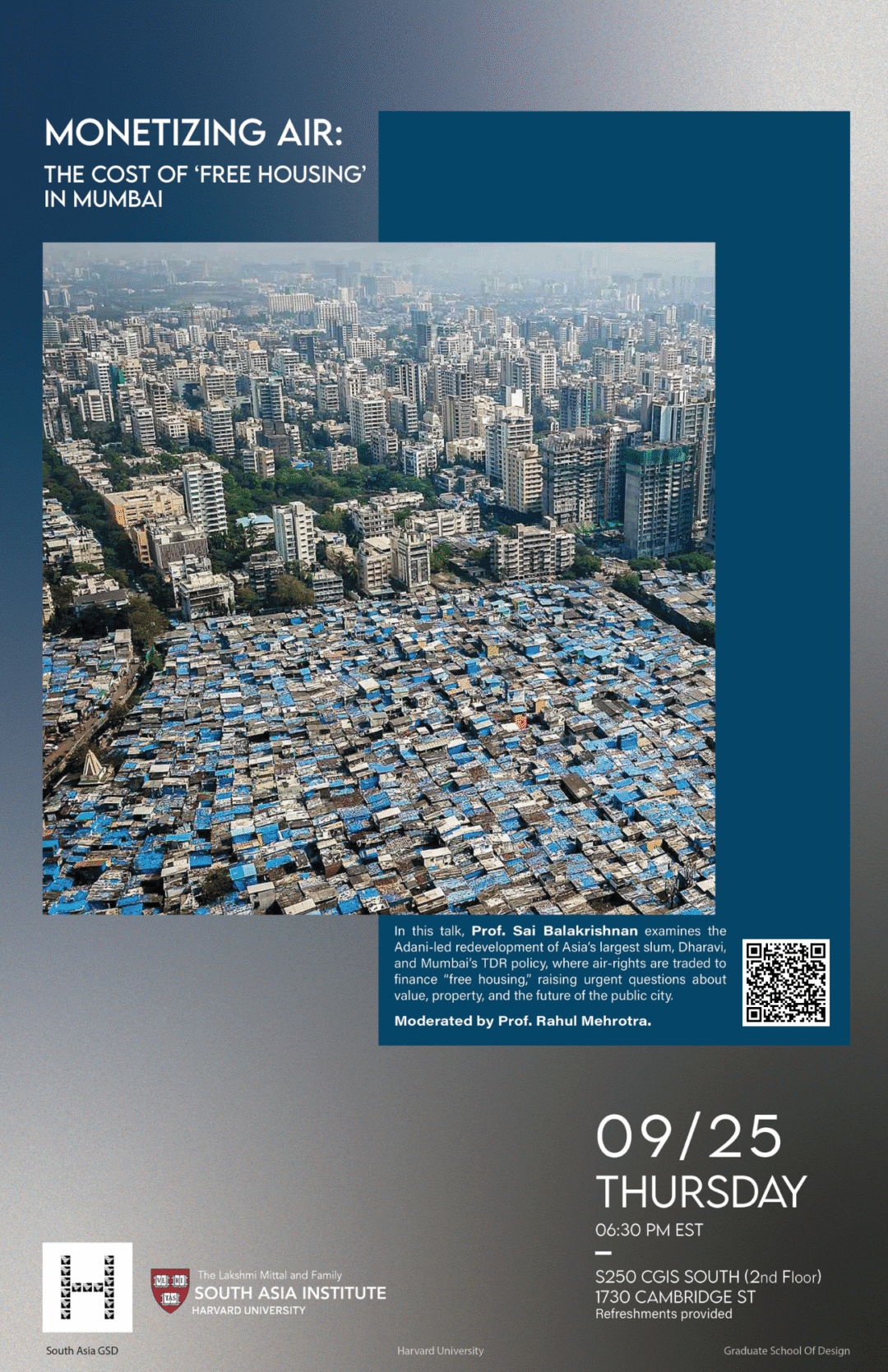Join us for another session of the popular State of Architecture in South Asia series that will discuss the cost of ‘free housing’ in Mumbai, India.
Speaker: Sai Balakrishnan, Associate Professor of City and Regional Planning at the University of California, Berkeley
Moderator: Rahul Mehrotra, John T. Dunlop Professor in Housing and Urbanization, Harvard Graduate School of Design
About the talk:
In 2023, one of India’s most powerful conglomerates, the Adani Group, secured the contract to redevelop Dharavi, popularly referred to as ‘Asia’s largest slum.’ The most coveted asset in the Dharavi redevelopment is air: the state is offering air-rights as incentives for rehabilitating ‘slum dwellers.’ This talk reveals the costs and contradictions of Mumbai’s ‘free housing’ policy, and the planning processes through which public resources (like air) are privatized in vertical cities.
Abstract:
In 2023, one of India’s most powerful conglomerates, the Adani Group, secured the contract to redevelop Dharavi, often referred to as ‘Asia’s largest slum.’ The prized asset in the Dharavi redevelopment is that of air: the state is offering air-rights as incentives for rehabilitating Dharavi’s ‘slum dwellers.’
Over the past two decades, Mumbai has witnessed the construction of massive resettlement housing complexes, disparagingly labeled ‘vertical slums’ by activists. These complexes are financed through a land-use instrument known as Transfer of Development Rights (TDR). The TDR entails two sociolegal maneuvers: first, the severing of air-rights from the land itself, and second, the transfer of air-rights across space to be stacked onto other sites. This severing and stacking of air-rights echoes older struggles over land enclosure, but in a new context of fiscal austerity. Increasingly, local governments are using their zoning powers to quite literally generate public revenues out of thin air; these revenues finance the provisioning of ‘free housing’ for urban citizens. This raises critical questions: What is the cost of ‘free housing?’ And what are the material politics of minting revenues out of air?
This talk maps out the conceptual contours of transforming air into property that can be monetized. This talk is also driven by an empirical puzzle: despite the promise of “free housing” financed through revenues minted out of air, Mumbai’s TDR market initially failed to take off. It took immense planning work for the TDR market to take off and stabilize. This talk explores the mundane yet indispensable planning actions that reconfigured air into new relations of value and new forms of vertical property.
At the crux of TDR markets is a fundamental planning question: what do we mean by land in the context of land-use planning? As planners and planning institutions enable the severing and stacking of air-rights into new forms of enclosure, how should we reconceptualize land-use planning in order to reclaim the public city?

